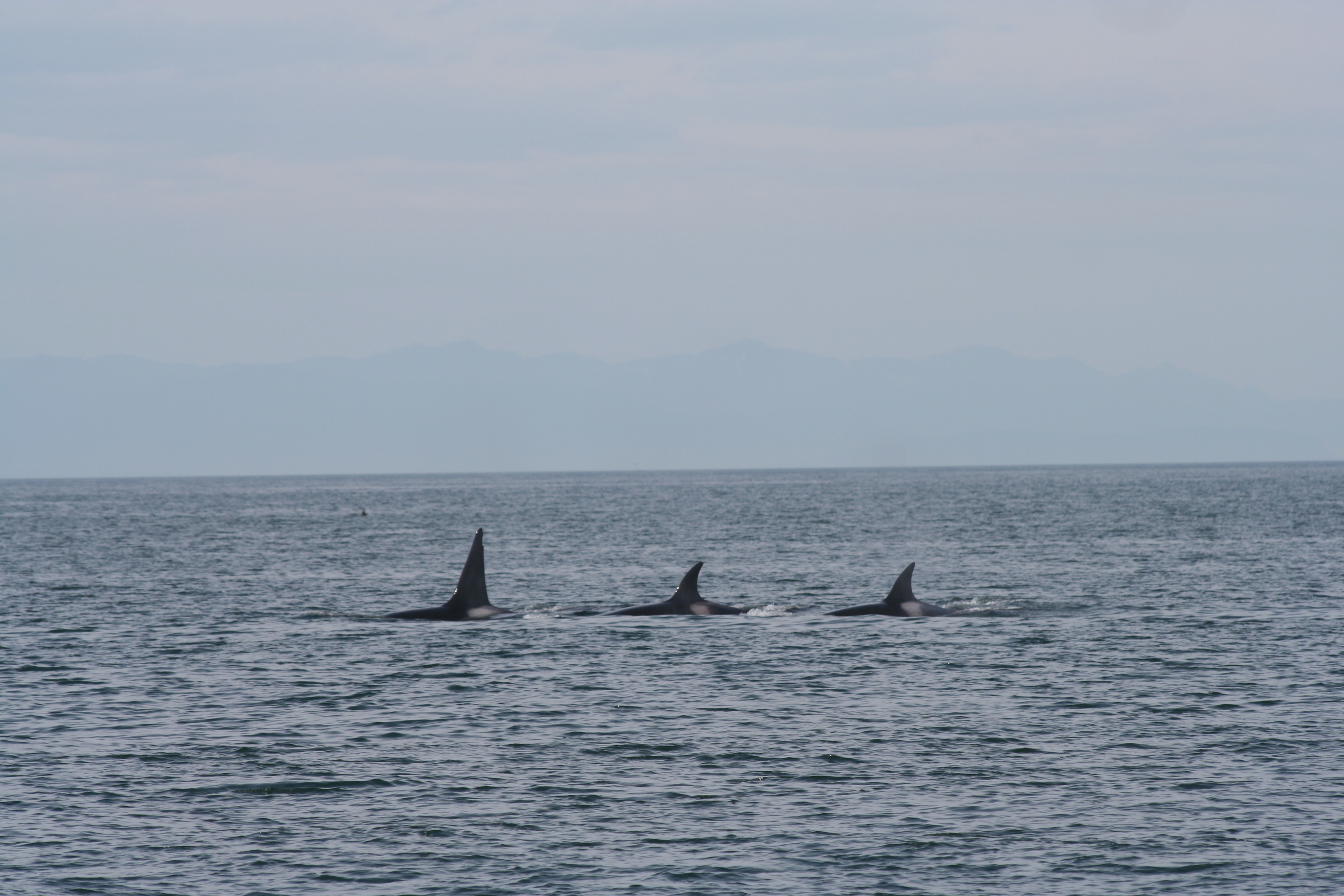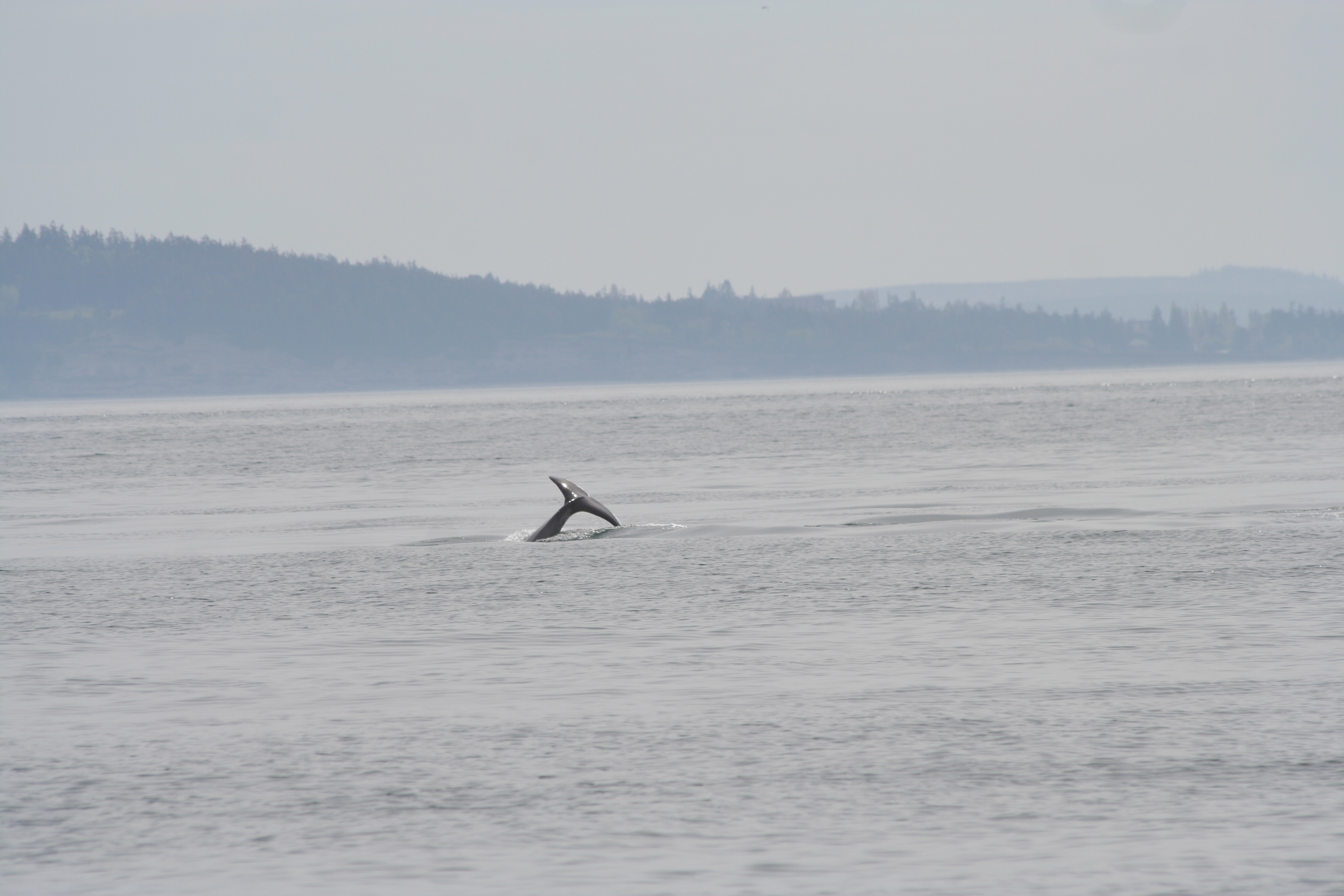First week on water…fantastic
We arrived back on San Juan Islands three days ago. Looking back, it has been a very interesting week out at sea. My thoughts are sort of all over the place right now, because a lot certainly has happened this week, all accounted for in Nora’s blog if you were interested. But I shall share with you my highlights and thoughts about this past week.
I have to say, this is my first time officially boarding a boat and sailing out. I have only been on ferries and cruises, so I believe it does not count. On the 42 foot catamaran, Gato Verde, our captain Todd Shuster, welcomed us to the sailing world. From there, I learned how to navigate, read current maps, tie knots, drive the boat and tack when necessary, learn the names of boat parts, and anything boat related I could think about. It was quite a bit to handle if you think about it, waking up at 7 every morning and getting right to work. By the end of the day, we as a group would slouch down on the seats around the laden lamp. Personally, I felt exhausted after everyday, but that tiredness would always quickly shift to giddiness and excitement. I’m out on a boat, you know! I’m actually going to be on this boat, living on it and collecting data on wild orcas, which drives me to continue to work hard.
Speaking of orcas, we saw a couple of them on the first day on the boat, which entirely flipped my mind. It was in the midst of the chore rotations, that we all jumped when Kathryn yelled, “Whale!â€Â And what do you know? There were two groups of transient orcas swimming about to the starboard side. Immediately, I jumped up, super excited about the orca sightings, feeling like a little kid again. Todd quickly made a huge U-turn to follow the whales’ path. From there, I knew that we were not going to make it to Neah Bay, where we were originally planning on going to fix a broken hydrophone.
But I think we all made the best decision in following the whales instead of sticking to our plan. We chased them for a good six hours, constantly scanning the horizon for their dorsal fins with binoculars, while Nora and Kathryn would share the Beam Reach camera in hopes to ID the whales. We did get an ID on the male and a female: T87 (approx 1963) and T90B (2006), respectively. That said, there were a lot more whales than that. We saw about eight of them total. It made it really hard to count just because they kept taking longer dives. I guess that is what people say: transients are more difficult to follow and research since they are they ones that dive deeper and longer. They also spread out into a smaller amount of individuals per group, making it difficult to trace if they speed on ahead of the boat.

The most memorable things that happened were numerous. Firstly, a couple of orcas popped up from the water right behind the stern, startling us. I have to admit, I squealed with delight. They were so close, perhaps about three meters away from the boat. Todd shut off the motors instantaneously as we watched them swim by. I was too shocked and stunned to even lift my camera out to take a photo. It was absolutely gorgeous to experience a transient this close to us. Later on in the distance, we could see that the orcas were staying in the same area for a long time, erratically swimming in different directions and diving constantly. We suspected them to be foraging, or found something to eat perhaps. There were a ton of seagulls flying about, maybe looking for some meat scraps to pick off of. What topped it off though, was when, I peered through my binoculars, and one of the orcas performed a spyhop. Lastly, closer to the afternoon now, when two more whale watching boats joined us, we saw the group of female orcas out in the distance. They started to perform various surface active behaviors. They blew a couple of times out of the water, and then they started tail lobbing. That was really a sight to see, gazing at their tail flukes rising out of the water a couple of times. We also saw some tail slaps in the water.

That was probably the major highlight of the week. Other than that, we saw other wildlife as well. Tufted puffins, seals, river otters, and many seagulls as well. We have practiced a couple of times in deploying equipment and getting situated with using the sound recording devices. We now just have to wait for the southern residents to show up. I am thoroughly excited for the rest of the sea weeks to come. Who knows what wonders can happen when out in the blue? We shall keep everyone posted while listening to the live hydrophones in a variety of areas.



 Twitter
Twitter LinkedIn
LinkedIn Facebook
Facebook